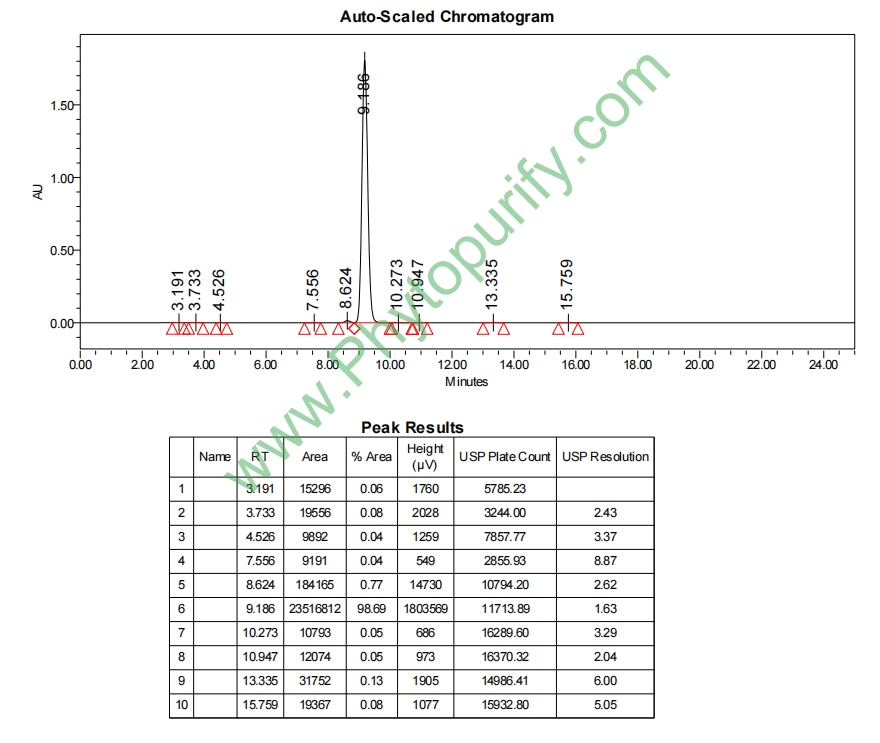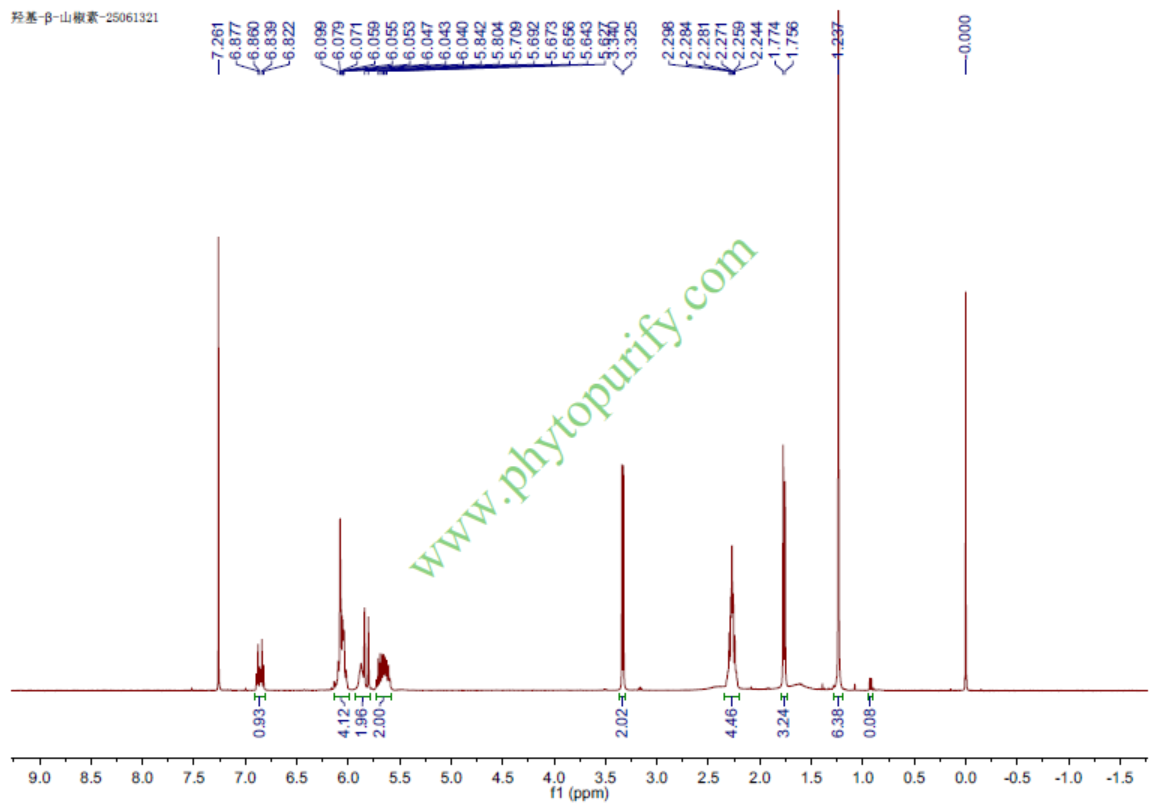
Hydroxy-β-sanshoolCAS No.:97465-69-5
|
||||||||||
 |
|
|
||||||||

| Catalogue No.: | BP4107 |
| Formula: | C16H25NO2 |
| Mol Weight: | 263.381 |
Product name: Hydroxy-β-sanshool
Synonym name:
Catalogue No.: BP4107
Cas No.: 97465-69-5
Formula: C16H25NO2
Mol Weight: 263.381
Botanical Source: Zanthoxyli pericarpium
Physical Description:
Type of Compound: Alkaloids
Purity: 95%~99%
Analysis Method: HPLC-DAD or/and HPLC-ELSD
Identification Method: Mass, NMR
Packing: Brown vial or HDPE plastic bottle
Storage: Store in a well closed container, protected from air and light. Put into refrigerate or freeze for long term storage.
Whenever possible, you should prepare and use solutions on the same day. However, if you need to make up stock solutions in advance, we recommend that you store the solution as aliquots in tightly sealed vials at -20℃. Generally, these will be useable for up to two weeks.
The product could be supplied from milligrams to grams
Inquire for bulk scale.
For Reference Standard and R&D, Not for Human Use Directly.
Description:
Hydroxy-β-sanshool is a pungent compound, it can cause oral numbness.
References:
J Agric Food Chem. 2018 Jun 6;66(22):5621-5634.
Dynamic Proteome Alteration and Functional Modulation of Human Saliva Induced by Dietary Chemosensory Stimuli.
METHODS AND RESULTS:
Saliva flow measurements and SDS-PAGE separation of human whole saliva freshly collected after oral stimulation with citric acid (sour), aspartame (sweet), iso-α-acids (bitter), mono sodium l-glutamate (umami), NaCl (salty), 6-gingerol (pungent), hydroxy-α-sanshool (tingling), and Hydroxy-beta-sanshool (numbing), followed by tryptic digestion, nano-HPLC-MS/MS, and label-free protein quantitation demonstrated a stimulus- and time-dependent influence of the dietary chemosensates on salivation and the salivary proteome composition. Gene ontology enrichment analysis showed evidence for stimulus-induced alterations of the saliva proteome to boot an efficient molecular defense network of the oral cavity, e.g., 6-gingerol increased salivary lactoperoxidase activity, catalyzing the oxidation of thiocyanate to produce the antimicrobial and antifungal hypothiocyanate, from 0.37 ± 0.02 to 0.91 ± 0.05 mU/mL 45 s after stimulation. In comparison, oral citric acid stimulation induced an increase of myeloperoxidase activity, catalyzing the chloride oxidation to generate antimicrobial hypochloride in saliva, from 0.24 ± 0.04 to 0.70 ± 0.1 mU/mL as well as an increase of salivary levels of lysozyme, exhibiting antimicrobial activity on Gram-positive bacteria, from 6.0-10 to 100-150 μg/mL.
CONCLUSIONS:
Finally, microbial growth experiments clearly demonstrated for the first time that the increase of the salivary lysozyme abundance upon oral citric acid stimulation translates into an enhanced biological function, that is an almost complete growth inhibition of the two lysozyme-sensitive Gram-positive bacteria tested.
HPLC of Hydroxy-β-sanshool

HNMR of Hydroxy-β-sanshool
